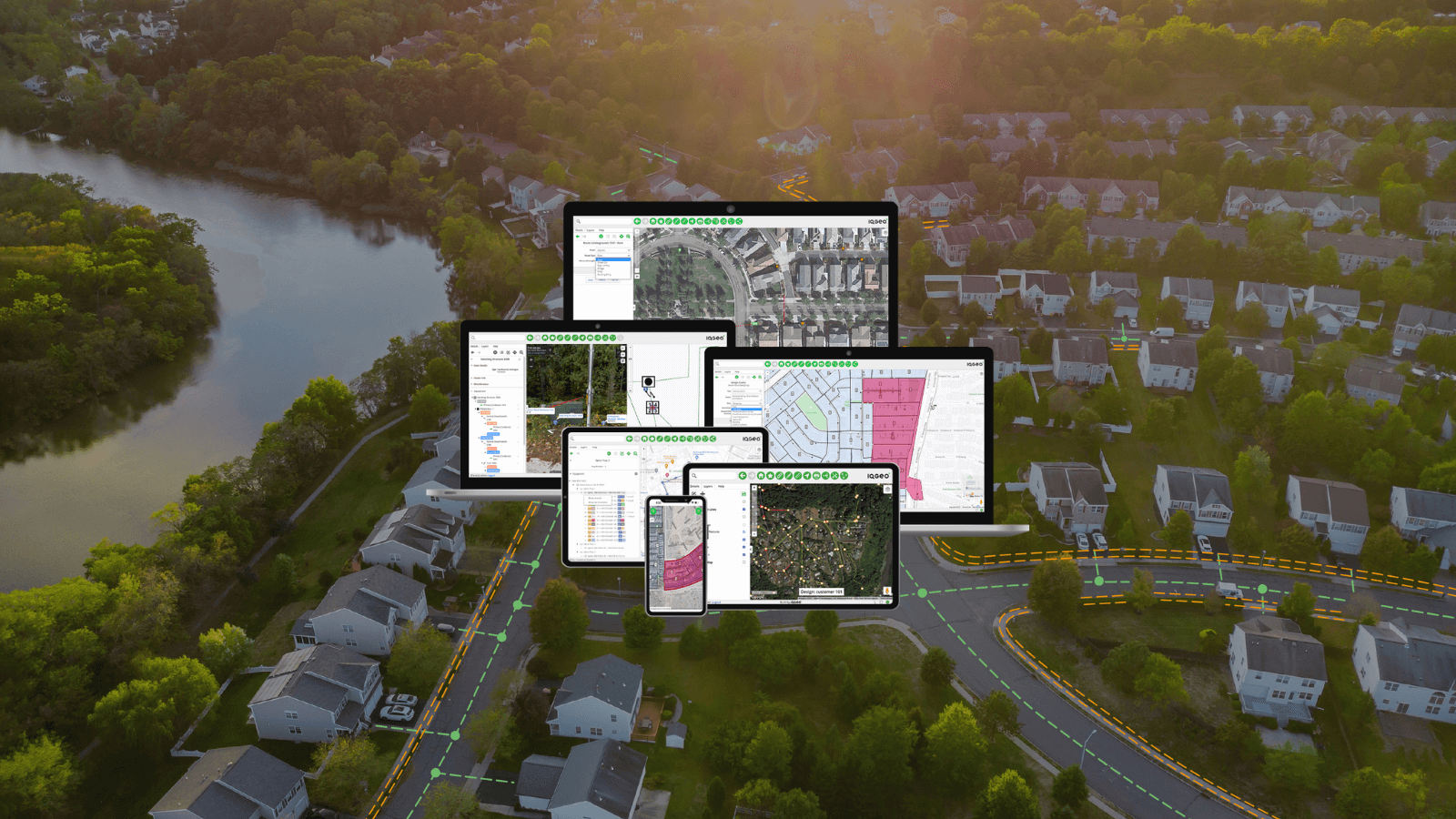IQGeo’s webinar, in partnership with the Fiber Broadband Association, explored tools for network planners to efficiently deploy fiber networks. Challenges include the scale of new deployments, optimal deployment architecture, and the cost of FTTH builds.
During the webinar James Wheatley, Head of Product Management at IQGeo and I discussed automated design solutions using IQGeo's Comsof Fiber software which significantly reduces planning and design time, and lowers build costs.
At the webinar's start, a poll revealed that 48.65% of planning teams consider input data quality their biggest design challenge, followed by design output quality and design speed.

IQGeo’s software addresses these challenges, as outlined in the webinar.
An overview of Network Manager Telecom and how it relates to Comsof Fiber
Network Manager Telecom offers comprehensive fiber optic network management software, accelerating planning and design, and integrating the entire network lifecycle from construction to maintenance.
Comsof Fiber, part of the Network Manager Telecom suite, supports the design phase with advanced automated high-level (HLD) and low-level (LLD) fiber planning capabilities. It allows for quick costing of large-scale plans and easy adjustments to test different design and architectural scenarios.
The impact of high-quality network designs
When designing and constructing fiber networks, operators should ask: Should I focus on optimizing design or build operations? Where will I see the biggest ROI? How detailed should my designs be before field deployment? Are HLDs sufficient?
Real-world experience shows that high-quality, detailed designs positively impact the network lifecycle. Accurate designs speed up field validation and reduce major construction costs by ensuring consistency and minimizing unplanned changes. Investing time in creating validated designs leads to significant cost savings in construction and long-term maintenance.
Comsof Fiber: How does it work and how does it help?
Comsof Fiber uses network model information from Geographic Information Systems (GIS), including the IQGeo Network Manager Telecom model or other GIS environments like QGIS. This GIS view is crucial for planning, providing geographical insights that ensure consistent designs and a predictable build process.
Data input
Comsof Fiber enables operators to input various GIS data, such as addresses, poles, and streets. This data can be reused in multiple designs to minimize costs and the usage of our optimization engine leads to significant time gains in the design process. A portion of these time gains can then be invested in the improvement and/or search for better input data so that the total design cycle time will reduce, with better design output quality as a consequence. Comsof Fiber can also generate multiple designs quickly, further reducing expenses.
The rules within Comsof Fiber enhance fiber architecture consistency, accelerating rollout and cutting build costs. However, if GIS data is incomplete or unreliable, the designs will be lower quality. Improving GIS data quality before running automated designs is essential.
 IQGeo Comsof Fiber integration with Network Manager Telecom, configuring the rules.
IQGeo Comsof Fiber integration with Network Manager Telecom, configuring the rules.
Network architecture
After importing all required GIS and network model data, operators establish the network architecture using Comsof Fiber design rules that also define the required data and equipment.
Operators can model different architectures constraints (cabinet size, maximum distance etc.), equipment types (e.g. cables, ducts, closures etc.), and costs (e.g. cost of trenching versus aerial, MPT sizes etc.) and then compare them in many different scenarios. Once all this information is modeled and described, it can be used in subsequent calculations which allows operators to continually learn, constantly improving network design efficiency.
IQGeo's automated design software leverages all available data and variables to identify the most optimized network design. This can cut design time by up to 90% when compared to a manual design process, and it streamlines the hand over to construction.
Detailed output
Once all this information is configured with fiber network architecture and equipment, Comsof Fiber will run design calculation, which generates a detailed output, including the Bill of Materials (BoM), and cost per premise with full network design connectivity.
The BoM shows a high-level overview of how many homes there are in an area, the cost of deploying fiber to these homes in total, or per dwelling. It can also go deeper and provide detailed information on the materials, components, and instructions to construct a network.
Another aspect that can be shown as part of the output is the costs of different addresses and homes in each area. This can be used in consideration in rural areas, as higher cost addresses can be excluded from the deployment and be considered for alternatives such as fixed wireless access.
Creating a full fiber network connectivity model is extremely valuable for the design process and for ongoing construction and maintenance. For example, the connectivity model enables tracing from a certain demand point all the way back to the central office, allowing the possibility to consider optical budget losses for equipment along the fiber route.
 IQGeo Comsof Fiber integration with Network Manager Telecom, changing the design.
IQGeo Comsof Fiber integration with Network Manager Telecom, changing the design.
IQGeo's fiber planning and design software supercharges planners with an interactive design experience, you can freely adjust cluster configurations, relocate cabinets, and reposition aggregation points. Simply re-run the calculations, and the software incorporates your changes, streamlining the design process. This iterative approach dramatically reduces design time when compared to traditional manual methods and it improves design consistency which saves construction costs.
Increased efficiency across fiber planning, design, and construction processes
Streamline your fiber network planning and design workflow with a single, unified interface. Data from various sources converge in one operational view, eliminating the need for engineers to juggle multiple systems. This translates to significant efficiency gains across planning, design and construction processes.
IQGeo's fiber planning and design software tackles three key challenges:
- Simplified data input: Streamlined data entry minimizes errors and saves time.
- Accurate data generation: The software ensures data integrity, leading to higher-quality design outputs.
- Faster design cycles: Combining these benefits speeds up the entire design process.
As James Wheatley aptly states, "IQGeo's software offers a more efficient and user-friendly experience. By consolidating data into a single planning and design platform, it fosters collaboration, ensuring everyone works from a unified understanding of the network."
Book a demo to see Comsof Fiber in action >>>
To learn more about some of the topics discussed, check out the webinar hosted in partnership with FBA.

Fiber Product Manager at IQGeo
Similar articles:




 Previous
Previous







